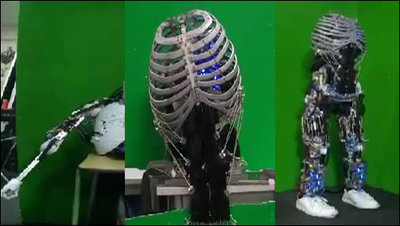Scientists use fungi to create ``living skin that regenerates'' based on the movie ``Terminator''

The T-800, which appears in the movie ``Terminator'', one of Arnold Schwarzenegger's masterpieces, has a skeleton made of titanium alloy covered with cellular tissue similar to humans, so it looks just like a human. Scientists inspired by this work have succeeded in creating 'living skin' using fungi.
Fungal Skin for Robots | Research Square

Terminator model has living skin made from fungi | New Scientist
Scientists Have a Great Idea: Cover Killer Robot in Horrifying Fungus
https://futurism.com/the-byte/living-skin-robot-fungus
Scientists Are Using Fungus To Create The Terminator
https://www.giantfreakinrobot.com/sci/scientists-fungus-create-terminator.html
This paper was written by Antoni Gandia of the Polytechnic University of Valencia and Andrew Adamatsky of the University of the West of England, and was published as a preprint (unpeer-reviewed paper) on the paper publication site Research Gate.
Mr. Gandia said, ``In the movie ``Terminator,'' there is a scene where skin is grafted onto a robot.The skin is added from outside, but the robot collects that data and automatically repairs the skin. 'We wanted to show that this is already possible.'
Mr. Gandia and Mr. Adamatsky put Reishi sessile bacteria that grow under various conditions in a fixed medium made of agar, attached them around a 7-inch (just under 18 cm) model of the Terminator, and then placed them in an incubator. I put it inside.
Attaching the culture medium to the model.

Then, in just 5 days, the terminator was wrapped in mycelium. Gandia et al. describe this as 'a living, self-regenerating, reactive Reishi sessile mycelium.'

The 'skin' made from this bacteria is light and sensitive to the touch, and as long as it is nourished, it will self-repair even if damaged.
Gandia and Adamatsky said they hope their research has applications in buildings and will help lay the foundation for creating a 'living skin' that can act as a temperature regulator. is.
Related Posts:
in Science, Posted by logc_nt







